Experimental
Probability of drawing a 2 (as a percent)
19%
the probability of rolling a 2 (give answer as a fraction)
1/6
The list of possible outcomes in a probability experiment
Sample Space
There are 3 blue, 2 green and 4 yellow tiles in a dish. If I draw one and do not replace it, then draw another what is the probability of drawing two blues.
3/9 then 2/8 so P(b,b)= 1/12
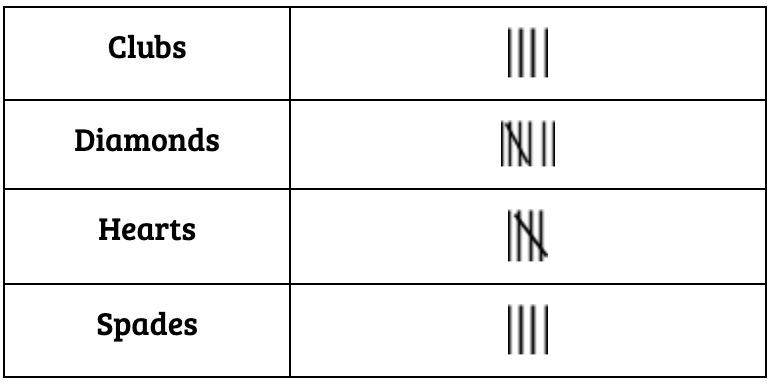
Mr. Barker found the probability of drawing a spade to be 1/5 or 20%. Did he find the theoretical or experimental probability?
Experimental Probability because theoretical would be 1/4
Given a 4 color spinner with equal parts (red, blue, yellow, green) what is the probability of spinning red 5 times in a row?
1/1024
Probability of drawing the Queen of Hearts?
1/52
Probability of an even number or a 1
(give as a percent)
67%
Events that have no influence on each other
Independent
There are 3 blue, 2 green and 4 yellow tiles in a dish. If I draw one and do not replace it, then draw another what is the probability of drawing a blue then green
3/9 then 2/8 so P(b,g)= 1/12
Probability of flipping heads twice in a row (as a fraction)
1/4
You have a bag of marbles, four red, seven yellow, two blue and five green. What is the probability of choosing orange?
0
Probability of drawing a 2,3 or 4 (as a fraction)
3/13
Probability of rolling an 8 on a single die
0
The ratio of actual outcomes to the total number of possible outcomes in repeated trials
Experimental Probability
There are 3 blue, 2 green and 4 yellow tiles in a dish. If I draw one and do not replace it, then draw another what is the probability of drawing blue then yellow.
3/9 then 4/8 so 12/72 or P(b,y)=1/6
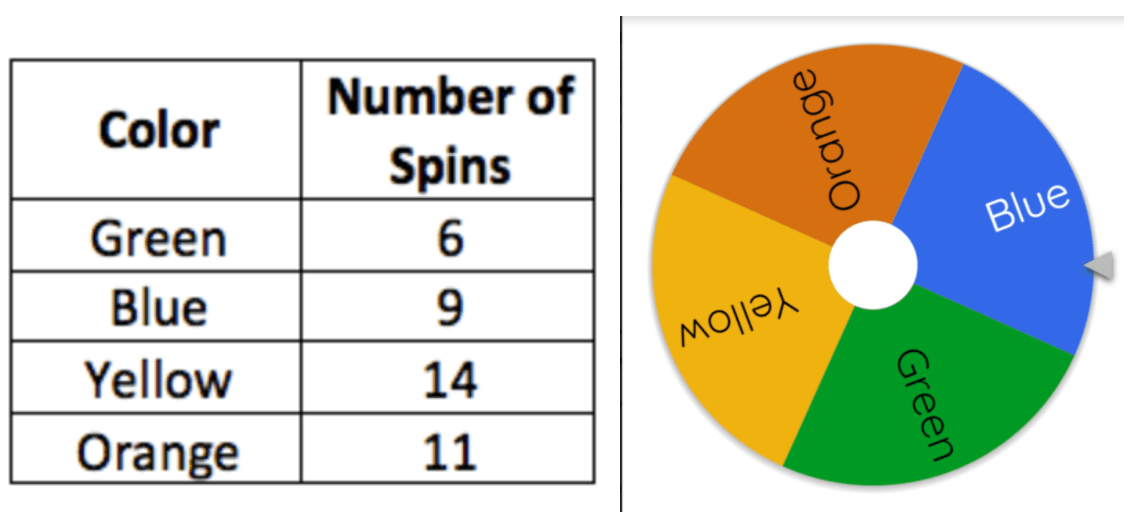
What is the theoretical probability of landing on green or blue?
1/2 or 50%
1/2*1/2*1/52 =1/208
Probability of pulling any 4 OR a heart (as a fraction)
4/13
probability of rolling a 5, then a 2 (as a fraction)
1/36
The second event is influenced by the first event
Dependent
If I am making a sandwich and have the options of wheat, white, sourdough, or rye for bread. Meat choices are ham, turkey, or tuna. Condiments are Mayo or Mustard. Draw a tree or area model to represent all options available OR use the fundamental counting principle to state the number of outcomes
Will Draw on Board!
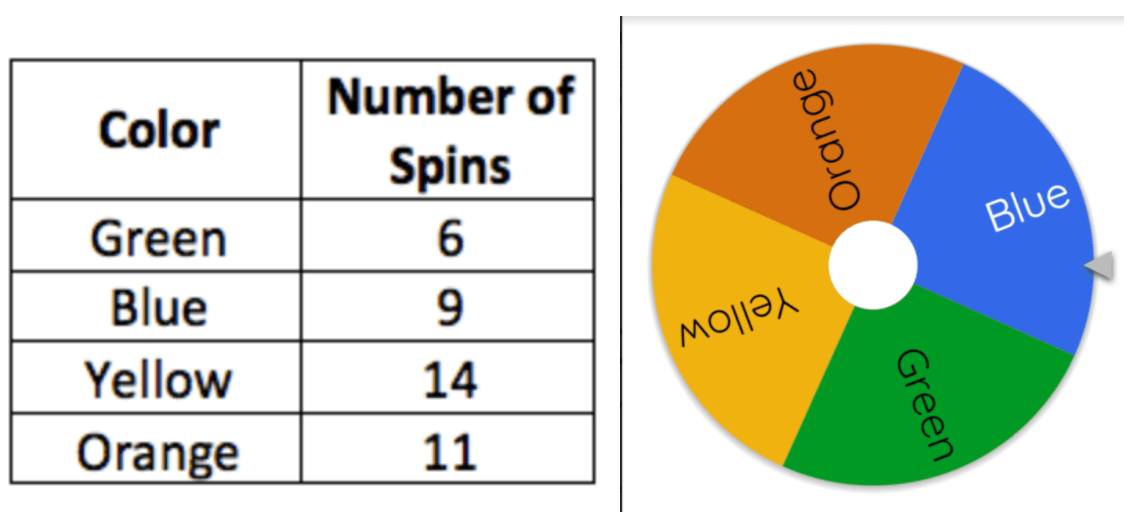
What is the experimental probability of landing on green or blue?
3/8 or 38%
the theoretical probability of rolling a one THEN picking a red card out of a deck of cards, and then picking a black card (Without Replacement)
1/6*1/2*26/51 = 26/612=4.2%
Out of 250 draws of a standard deck of cards what is the probability of drawing an ace.
4/52 = x/250 x=19.2 so P(ace)=about 19
the probability of rolling a six then a number less than 3 (as a fraction)
1/18
what we expect to happen mathematically
Theoretical probability
If I am making a sandwich and have the options of wheat, white, sourdough, or rye for bread. Meat choices are ham, turkey, or tuna. What is the probability someone will have a turkey sandwich.
P(turkey)= 4/12 or 1/3
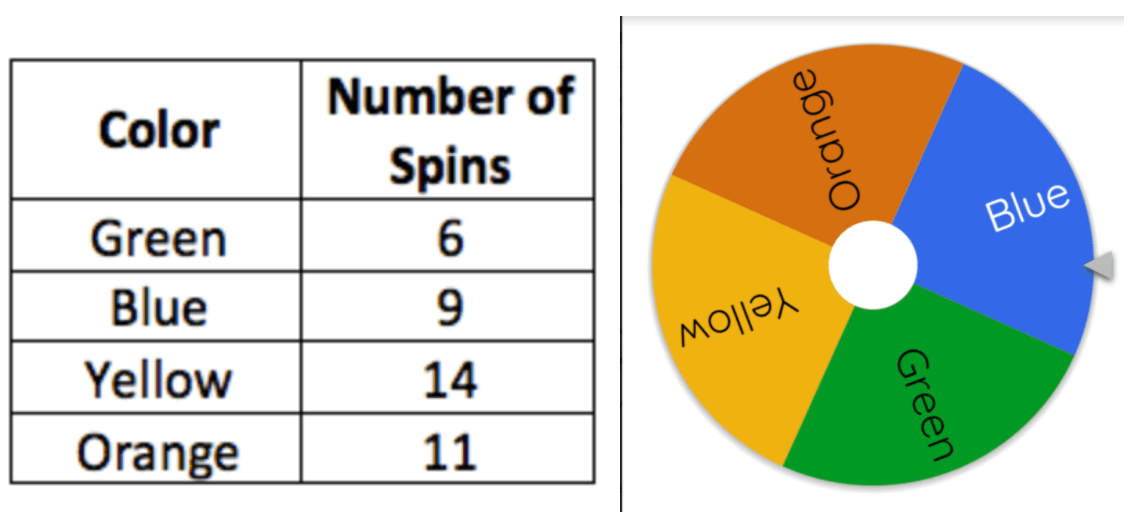
What is the theoretical probability of not landing on green?
3/4 or 75%
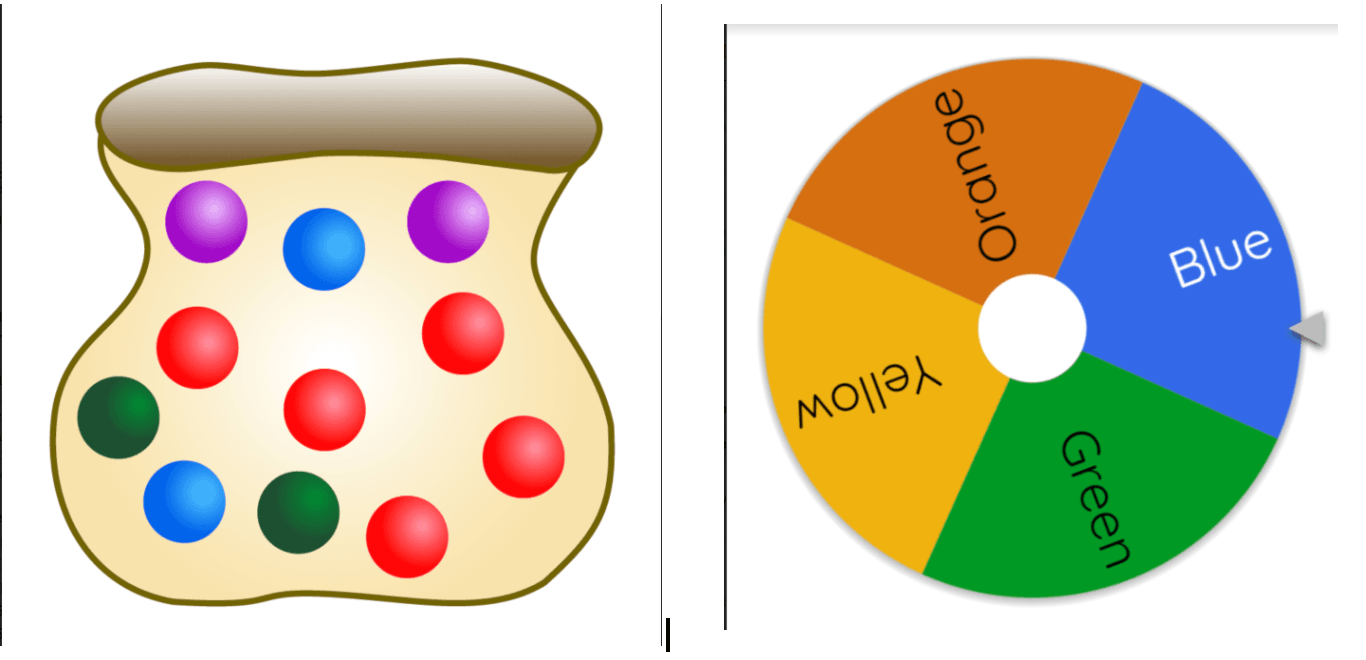 What is the theoretical probability of picking a purple marble out of 100 draws.
What is the theoretical probability of picking a purple marble out of 100 draws.
2/11=x/100 x=about 18
Probability of not an ace (as a percent)
92%
When rolling two dice, the probability that the sum is NOT 12. (as a fraction)
(Recall, there are 36 possible ways to roll 2 dice.)
35/36
The idea that the more times you conduct an experiment the more predictable the outcomes are.
Law of Large Numbers
If I draw a card card from a deck of cards and then roll a dice, What is the probability that I will pick a Face Card and roll a number less than 3? Write your answer as a percent
12/52 *2/6 =7.7%
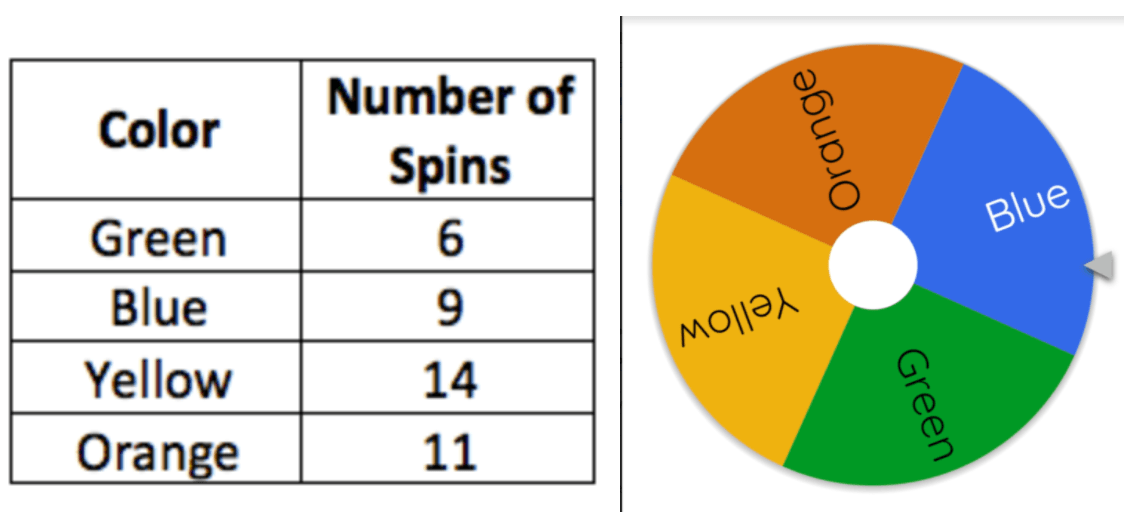
What is the experimental probability of not landing on green?
17/20 or 85%
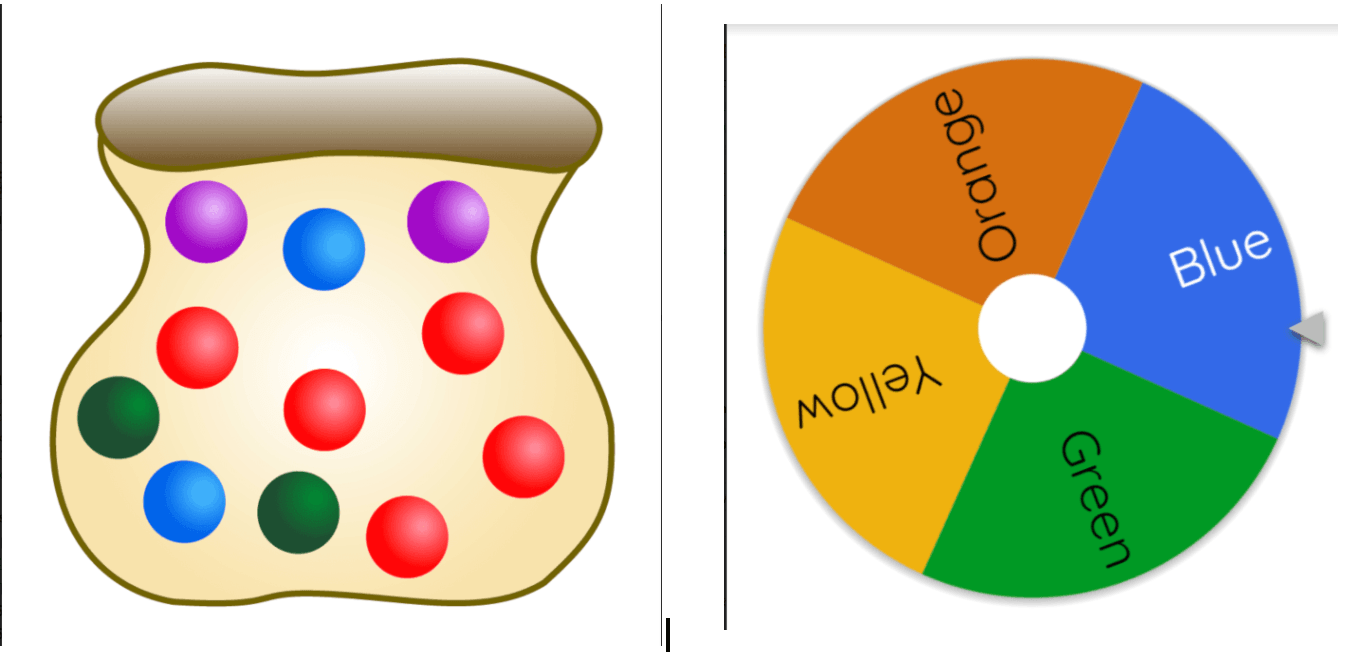
What is the probability drawing a red marble out of 150 draws.
5/11=x/150 x=about 68 times.